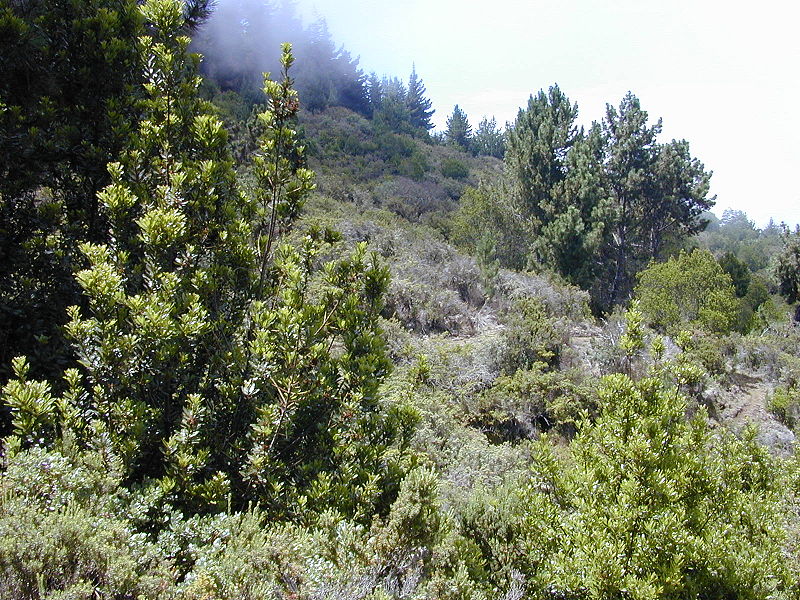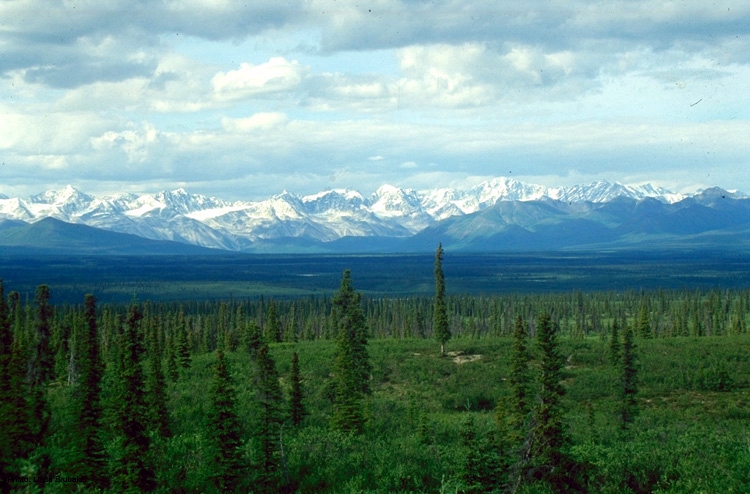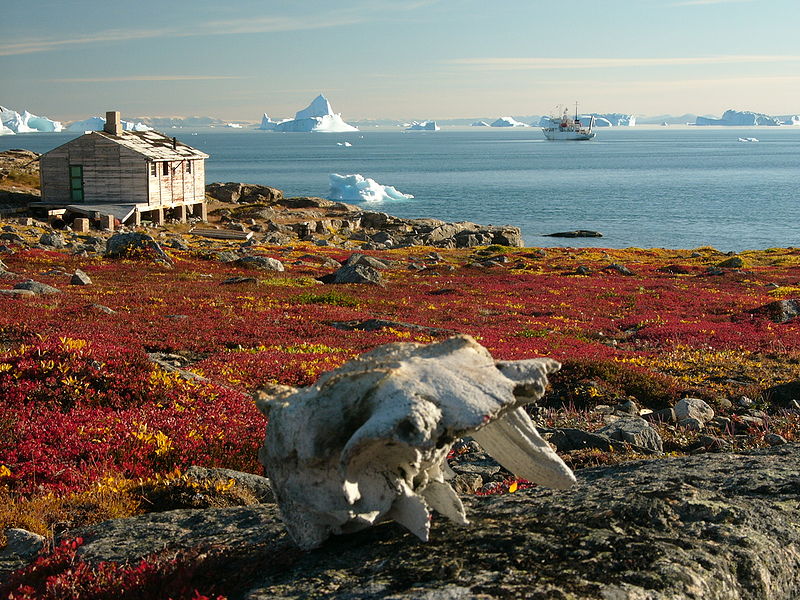That is, earth. It’s a big place and we’re almost everywhere on it, including places where the average day temperature cooks skin or makes your toes fall off. Let it not be said that we give up easily. Listing all the kinds of places humans have learned to thrive would be an endless job so of course we did that and also did it for everywhere we can’t live and also made sure there were fewer than ten entries so we wouldn’t hurt ourselves trying to memorize the full list. Also, it helped that we were willing to grind up all terrestrial habitats into massive sweeping concepts that contain wide variation within their bounds. How’d we do this? By classifying them based on dominant vegetation, of course! Animals and individual species come and go across continents, but vague plant-types are forever, and certain groups of those reliably eat certain climates for breakfast.
Now, let’s look at these nine super-habitats. And call them their proper names: biomes.
Starting from the equator and heading up, weeeee’ve gooooottt……
I: Tropical Rainforest
Tropical rainforests are easy as hell to quantify: lots of rain, high temperature, and dominated by the most gratuitous amounts of greenery you’ll find across the entire planet. Ever. Mostly evergreens that give short shrift to shedding leaves – when the climate’s like this all year, why bother?
Current usage: bulldozing.
II: Savannah/Tropical Seasonal Forest
A hop, skip, and a jump north and we find us some more open ground, but with still enough trees that it’s not really a solo grassland. The ‘seasonal’ bit is the keyword – this place doesn’t actually get that much less rain than the rainforest, but it only gets it for about half the year. The other half it parches like crazy, which leads to a lot of migration from dry to wet by anything that doesn’t enjoy eating dry grass and being incinerated in regular wildfires. The dominant plants are tough thorny buggers like these acacias.
Current usage: Poachin’ grounds.
III: Subtropical Desert
Contrary to the picture above, this doesn’t just mean the Sahara – subtropical deserts are pretty consistently found around 30 degrees north and south of the equator – the Kalahari and Mojave are another couple of examples. Basically, warm moist air at the equator rises, gets cold, shits water all over the rainforests and floats aimlessly north and south until it descends and sucks all the moisture from the land beneath it like a hideous gas-vampire. This produces subtropical deserts, where you can find tiny little shrubs that just won’t quit and a wide variety of animals with ridiculous ears that refuse to come out before midnight lest they be fried to a crisp.
Current usage: Oil, questionable journalism, questionable warfare.
IV: Shrub/woodland
Shrubland has what you could call a ‘Mediterranean’ climate. You know, lots of poetry, philosophy, togas, and xenophobia. No, wait, that was a few thousand years ago damnit let me try again. Shrubland is dry and has wetter winters and periodically gets eaten alive by forest fires, which is why the plants there tend towards being evergreen and hard as hell – if the fire doesn’t take your roots, you’ll just spring back up again, madder than ever. In california it is called ‘chapparal’ from the spanish ‘chapparo’ meaning evergreen oak and now I’ve filled your head with something completely useless. Team effort!
Current Usage: Overgrazing and soil erosion.
V: Temperate Rainforest

If you want to go big, you go here. Douglas firs and redwoods – it might be nippier than the tropical version, but you can still find ridiculously huge evergreens and a healthy heaping of water (lots of it in fog). New Zealand, California, British Columbia and such. Don’t forget to bring your camera and a working pair of eyeballs, and try to save some memory space. You probably don’t want to miss out on this.
Current Usage: Logging.
VI: Temperate Seasonal Forest
Also known as ‘trees.’ It’s just a bunch of trees. Just a bunch of deciduous trees that get some rain and get cold in the winter. They do one thing for half the year and another the other half. Look, it’s what’s right outside my window, I can’t find it very exciting what do you want from me damnit.
Current Usage: Logging, clearing, uprooting from lawn.
VII: Temperate Grassland/Desert
In North America, this is a prairie. In Europe and Asia, it’s a steppe. In reality, it’s the same damned thing: no trees, some shrubs, and enough grass to choke a hundred million sheep to mindless woolly death. Though really, the cold winters sort of take top tier as far as lethal dangers. Speaking of hot and cold there’s a LOT of fires here, even more than in shrubland, but grass doesn’t really give a damn about that since it’s basically the plant equivalent of the Borg. You know, that star truck thing or whatever it is. “Resistance is silly” or something.
Current usage: Too many goddamned cows.
VIII: Boreal Forest
Also known as ‘taiga.’ Basically, it’s evergreen conifers (exactly what types and proportions vary, but you can usually bet there’s a spruce in there SOMEWHERE) copied and pasted ad nauseum across the entire upper half of Europe, Asia, and North America. It’s the largest terrestrial biome by a pretty sizable margin so I hope you appreciate it at least a little bit. If not, you could have issues. There are more trees here than you could shake any number of sticks at, and more sticks than you could shake any number of needles and leaves at, and more of THOSE than could be counted by any given omnipotent omniscient entity with too much time on his or her appendages.
Current Usage: Guess.
(It’s logging)
IX: Tundra
You head far enough north, you’ll find a place where the ground goes stone cold hard anywhere from thirteen to two feet down. Roots can’t hack it, shovels get dented. It’s permafrost, and it’s a big fuck-you to anything that dares want a sizable root system. Trees can go hang (they really do just give up – the spot where the taiga and tundra meet is called the timberline, in case you must know), and where the permafrost runs close to the surface not much bigger than a shrub’s shrub can grow there, and most of them don’t. No, you get lichens and moss, moss and lichens, maybe some grasses and a few sedges. And that’s that, and most of THAT’S frozen for most of the year – summer is a brief, beautiful window into flora gone berserk with growth-frenzy that then gives way to bleak frigidness once more.
Current Usage: Oil speculation, pretty photographs, freezing to death.
And that’s about it – for the land, at least. Aquatic habitats are a whole other kettle of fish – you’ve got your itty-bitty rivers, huge rivers, ponds, lakes, tide pools, and the oceans, which aren’t as big a deal as you’d think they’d be because 90% of all the interesting stuff is crammed into a coral reef or lodged up a continental shelf’s rear end. Everything else tends to fall into either ‘enormous blot of empty blue space’ or ‘hideously crushing depths of infinite cold dark.’
Picture Credits:
Amazon Rainforest: Phil P. Harris on Wikipedia, 2001-03-07, north of Manaus.
Kenyan Savanna: Christopher T. Cooper on Wikipedia, 2011-12-16, in Taita Hills Wildlife Sanctuary.
Libyan Desert: Lucca Gazza at http://www.galuzzi.it, 2007-04-07, in Tadrart Acacus.
Hawaaiian Shrubland: Forest & Kim Starr on Wikipedia, 2001-08-31, at Maui, Polipoli.
Sequoias: Public domain image from Wikipedia.
Canadian Forest: Cephas on Wikipedia, 2009-06-20, Jacques-Cartier National Park.
Canadian Prairie: Zeitlupe on Wikipedia, 2004-05, between Calgary and Edmonton.
Alaskan Taiga: Public domain image from wikipedia.
Greenland Tundra: Hannes Grobe on Wikipedia, 2007-08-31, Scoresby Sund.







